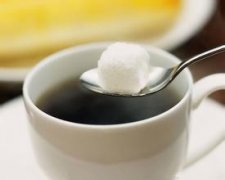Historic Hawaiian Kona Coffee

Kona Coffee has a long history. In 1828, the missionary Lagers first introduced the bourbon species from Brazil, but in 1892 he introduced Tibica from Guatemala. Farmers found that iron is more adaptable to water and soil than cards, so they completely replanted Guatemalan Tibica, becoming today's famous variety Kona Typica. The Kona coffee on the big island is planted at an altitude of about 300 to 1000 meters, which is lower than that of other coffee-producing countries, but it is higher than that of the Hawaiian islands. But Natabica is transplanted to other islands, but it does not grow well because of the high temperature, which can not give birth to the unique soft and sour fragrance. The temperature of other islands is higher, the varieties planted are also different, and the introduction of mixed-race Katimo, no wonder the taste is insipid, slightly earthy, obviously different from the authentic clean and sour fragrance. In November 2007, the winner of the Kona Coffee Culture Cup test was won by organic coffee, an old tree from KuaiwiFam, which was only 2, ⒛ 0 feet above sea level. It was rated as sweet green citric acid and jasmine, bright and layered, and sold for $36 per pound of raw beans.
But the altitude of the producing area is not high, but the sour taste of coffee is cleaner and more elegant than the coffee in the general low-altitude area. This is because the island is located in the subtropics of 19 degrees 20 degrees north latitude, which is cooler, and the lowest temperature in winter is above 12 degrees Celsius without frosting. With volcanic rock black worth and abundant Rain Water, thick clouds cover the sun in the afternoon, great temperature difference between day and night, and good drainage of volcanic soil, this is a high-quality coffee environment with no place to look for iron shoes in the general low-altitude area. It is fair to say that Kona is called "after low-altitude coffee".
Important Notice :
前街咖啡 FrontStreet Coffee has moved to new addredd:
FrontStreet Coffee Address: 315,Donghua East Road,GuangZhou
Tel:020 38364473
- Prev

Basic knowledge of Fine Coffee beans History of Java Coffee
Java coffee is famous in the early years, which refers to Arabica coffee formerly grown on the island of Java. It has a strong aroma, low acidity, taste lubrication, combined with mocha coffee, the Java mocha mixed coffee has been popular and has become synonymous with top coffee. At that time, Java coffee sold to Europe was a very special kind of coffee.
- Next

Basic knowledge of boutique coffee beans rating of Brazilian coffee producing areas
Compared with other producing countries in Central and South America, Brazil is significantly lower, with a larger proportion of estates less than 1000 meters. The landform here is flat and monotonous, lack of microclimate, and accustomed to unshaded tree (sun-exposed) planting, resulting in the development of Brazil's unique soft bean flavor-low sour taste, heavy nutty flavor, good chocolate sweetness and mellowness, but slightly woody and earthy, floral and
Related
- Detailed explanation of Jadeite planting Land in Panamanian Jadeite Manor introduction to the grading system of Jadeite competitive bidding, Red bid, Green bid and Rose Summer
- Story of Coffee planting in Brenka region of Costa Rica Stonehenge Manor anaerobic heavy honey treatment of flavor mouth
- What's on the barrel of Blue Mountain Coffee beans?
- Can American coffee also pull flowers? How to use hot American style to pull out a good-looking pattern?
- Can you make a cold extract with coffee beans? What is the right proportion for cold-extracted coffee formula?
- Indonesian PWN Gold Mandrine Coffee Origin Features Flavor How to Chong? Mandolin coffee is American.
- A brief introduction to the flavor characteristics of Brazilian yellow bourbon coffee beans
- What is the effect of different water quality on the flavor of cold-extracted coffee? What kind of water is best for brewing coffee?
- Why do you think of Rose Summer whenever you mention Panamanian coffee?
- Introduction to the characteristics of authentic blue mountain coffee bean producing areas? What is the CIB Coffee Authority in Jamaica?

